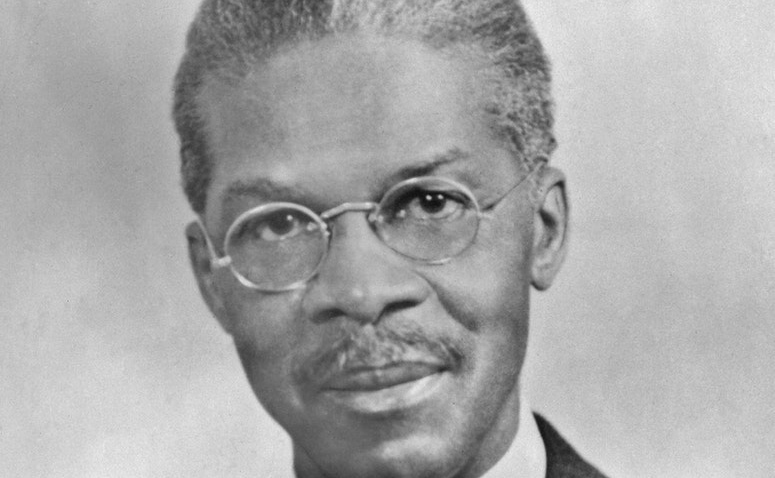In the annals of American history, certain milestones stand out, each representing a beacon of justice, equality, and the relentless pursuit of human rights. One such event is often overshadowed by subsequent civil rights movements but remains crucial to understanding the evolution of social change: the Original Freedom Ride of 1931, featuring the indomitable Louis Gregory and Willard McKay. This extraordinary journey not only serves as a testament to the principles of the Bahá’í Faith but also invites a profound reflection on the interplay of faith and activism.
The historical backdrop of the Freedom Ride is imperative to visualize the societal climate of early 20th-century America. The nation was marred by systemic racism, with Jim Crow laws reinforcing a culture of segregation. Amidst this oppressive atmosphere, the Bahá’í community emerged as a radical force advocating for racial unity and equality. The teachings of Bahá’u’lláh, the founder of the Bahá’í Faith, espoused the fundamental principle of the oneness of mankind. Within this context, the Original Freedom Ride is poignantly emblematic of Bahá’í principles in action, challenging the status quo in the name of justice.
Dominating the narrative of the Freedom Ride are its two principal figures: Louis Gregory and Willard McKay. Louis Gregory, a man of immense intellectual prowess and spiritual dedication, was a prominent African American Bahá’í and civil rights advocate. He espoused the virtues of racial integration and had a vision for a society devoid of racial prejudices. In conjunction with Willard McKay, a white Bahá’í who shared Gregory’s commitment to equality, the duo set out on a journey that would transcend mere transportation—this ride represented a pilgrimage toward justice.
On a fateful day in 1931, Gregory and McKay embarked on their well-organized trip, travelling in a vehicle through the racially segregated Southern United States. Their purpose was explicit: to demonstrate the Bahá’í commitment to the oneness of humanity by deliberately violating segregation laws. This deliberate defiance was not an act of rebellion for its own sake but a profound manifestation of love, as both men sought to break down the barriers that segregated communities and instilled fear among individuals. Through their journey, they were not merely challenging the injustices of their time; they were articulating a vision of inclusivity and unity, one that resonates with contemporary social movements.
As they crossed state lines and entered segregated establishments, the reactions they encountered were a tapestry of resistance and acceptance. While some denied them service, others, intrigued by their audacity, offered support. This duality provides a crucial insight into human behavior—provocation breeds curiosity, and solidarity can emerge from the most unexpected corners. The Original Freedom Ride serves as an irrefutable assertion that change—albeit often met with hostility—can catalyze dialogues that bridge the chasms of prejudice.
The implications of Gregory and McKay’s actions are profound, extending beyond the immediate context of their 1931 ride. Their journey acted as an impetus for subsequent civil rights efforts, encouraging many to engage actively in the fight against racial injustice. In an era where voices against oppression were often muffled, the determination emanating from two men of different racial backgrounds created a paradigm shift. Their collaboration serves as a vivid illustration of the Bahá’í teachings that emphasize the essential interconnectedness of humanity; no individual can be wholly realized until every member of society enjoys freedom and dignity.
Exploring the ramifications of the Original Freedom Ride invites us to engage in deeper contemplation. What does it mean to advocate for justice in a world fraught with divisions? How can the tenets of the Bahá’í Faith guide modern-day activism? Gregory and McKay’s fearless pursuit of equality prompts a re-evaluation of the ways in which we interact with others in our communities. Their narrative transcends the historical; it implores present and future generations to harness the courage to stand up against injustice, irrespective of personal sacrifice.
Furthermore, the Freedom Ride fosters discussions surrounding intersectionality—an essential framework in understanding how various forms of inequality overlap. The cooperative spirit exhibited by Gregory and McKay encourages us to consider how our identities—racial, gendered, socioeconomic—shape our experiences and our capabilities to enact change. The diversity of individuals involved in social movements can enhance resilience, fostering an environment where transformative action becomes possible.
In contemporary society, where divisions often feel insurmountable, the tale of the Original Freedom Ride of 1931 stands as a resonant reminder of the power of collective action rooted in shared values. It excavates the notion of activism as a form of spiritual practice, illustrating how faith can propel individuals into the sphere of social justice. The courage of Louis Gregory and Willard McKay invites a reconfiguration of our understanding of interdependence. Their legacy serves as a clarion call for unity in diversity—encouraging individuals to embrace differences as a source of strength.
In conclusion, the Original Freedom Ride of 1931 is not merely a historical event; it encapsulates the heart of Bahá’í teachings poised on the precipice of societal change. This extraordinary journey reminds adherents and allies of the steadfast purpose of actively working towards racial harmony and justice. Gregory and McKay’s actions resonate through time, beckoning contemporaneous souls to transcend barriers, fostering love where there has been division. The legacy left behind not only piques curiosity about the intersections of faith and justice but also underscores a pivotal truth: every act of courage can inspire transformation, forging paths toward a more equitable world.
